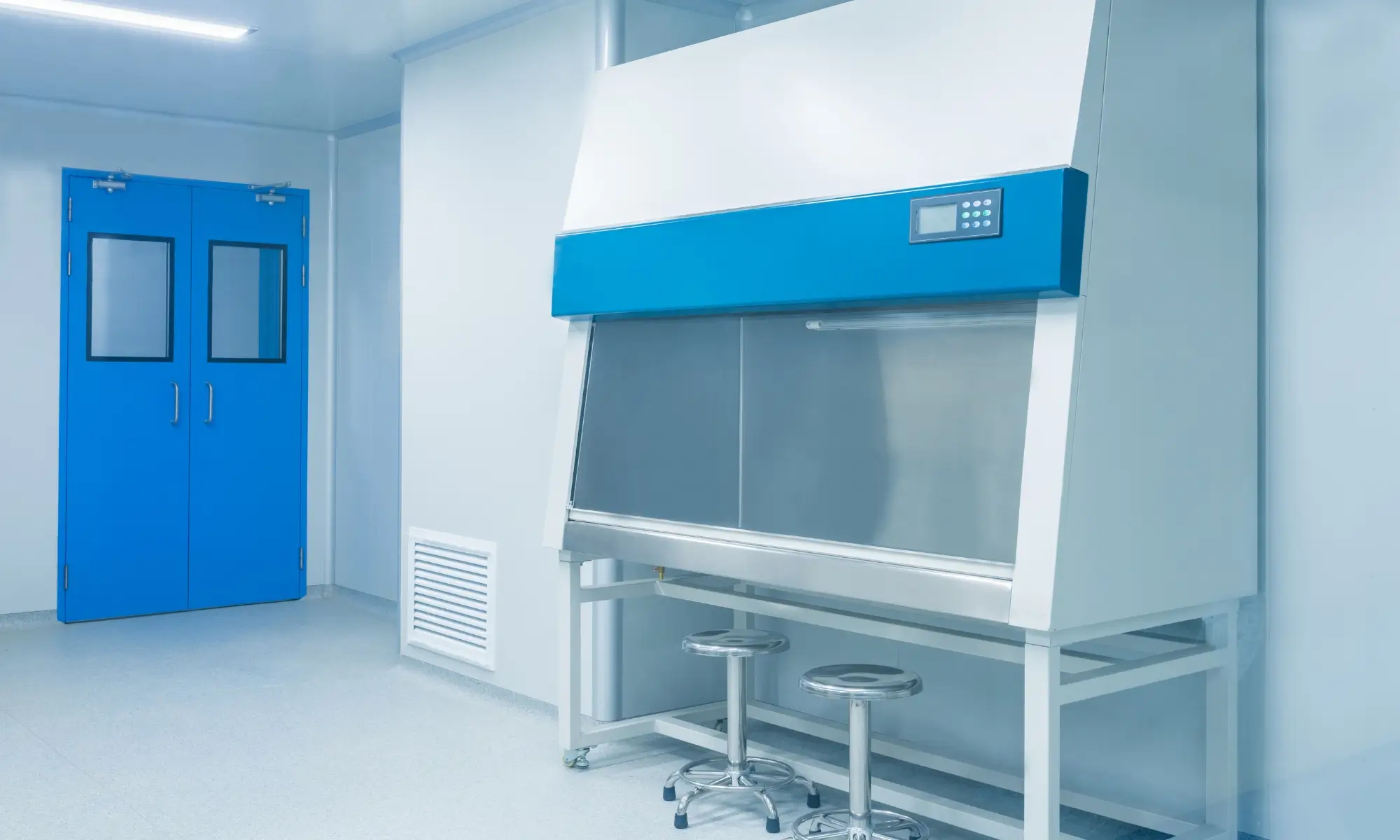A Biological Safety Cabinet (BSC) is a specialized, ventilated enclosure essential for safely handling biohazardous materials in laboratories, ensuring protection for personnel, experimental samples, and the surrounding environment. BSCs utilize High Efficiency Particulate Air (HEPA) filters and controlled airflow systems to contain infectious agents and maintain a sterile workspace, thereby preventing contamination and exposure.
There are three main classes of BSCs—Class I, II, and III—each designed to provide varying levels of protection based on the specific biosafety requirements and the types of biological agents being handled.
Understanding the different types of BSCs and their operational mechanisms is crucial for selecting the appropriate cabinet to meet stringent safety standards and ensure the integrity of scientific research. This blog delves into the various classifications of Biological Safety Cabinets, their distinct functionalities, and the underlying technologies that make them indispensable in modern biomedical and microbiological laboratories.
What is a Biological Safety Cabinet (BSC)? Definition
A Biological Safety Cabinet (BSC) is a specialized, ventilated enclosure used in laboratories to safely handle biohazardous materials by providing containment and maintaining a sterile workspace. Equipped with High-Efficiency Particulate Air (HEPA) filters, BSCs protect laboratory personnel, the environment, and experimental materials from exposure to potentially infectious agents and airborne contaminants.
Available in various classes—Class I, II, and III—each type offers different levels of protection tailored to specific biosafety needs, ranging from basic personnel and environmental protection to maximum containment for the most hazardous biological agents. Proper selection, installation, and maintenance of BSCs are essential to ensure their effectiveness in preventing contamination and ensuring safety in microbiological and biomedical research.
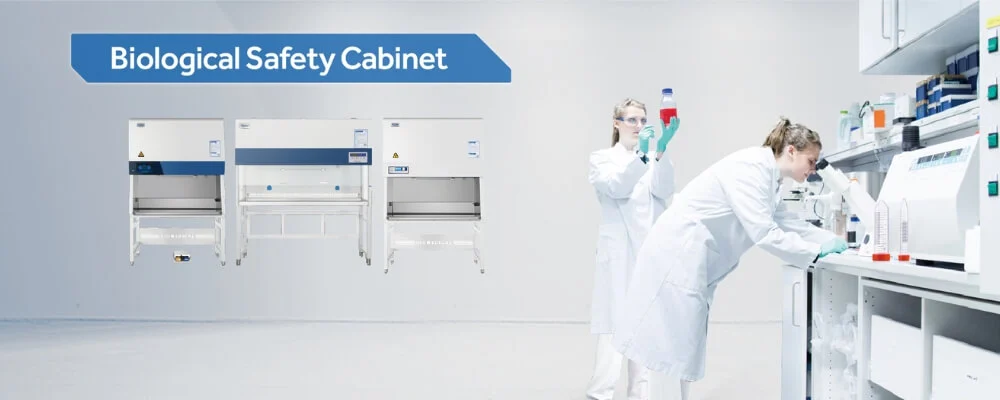
Benefits and Purpose Of Biological Safety Cabinet (BSC)
Purpose of Biological Safety Cabinets (BSCs)
Biological Safety Cabinets (BSCs) play a crucial role in laboratories that handle biohazardous materials by providing a controlled and safe environment for scientific research and clinical work. Their primary purposes include:
- Containment of Biohazards: Safely handle and manipulate infectious agents, preventing their release into the laboratory environment.
- Protection of Personnel: Shield laboratory workers from exposure to hazardous biological materials through controlled airflow and HEPA filtration.
- Environmental Protection: Prevent contamination of the surrounding environment by filtering and containing airborne contaminants before exhaust.
- Product Protection: Maintain a sterile and contaminant-free workspace to protect experimental materials and ensure the integrity of biological samples.
- Compliance with Safety Standards: Meet national and international biosafety guidelines (e.g., NSF/ANSI 49, CDC BMBL) to ensure laboratory safety and regulatory compliance.
- Versatile Application: Suitable for various biosafety levels (BSL-1 to BSL-4) and adaptable to different types of biological and chemical work.
Benefits of Biological Safety Cabinets (BSCs)
Biological Safety Cabinets (BSCs) are indispensable in laboratories handling biohazardous materials. They offer a range of benefits that enhance safety, protect research integrity, and ensure compliance with regulatory standards. The following are the key benefits of using BSCs in laboratory settings:
- Enhanced Safety: Reduces the risk of accidental exposure to infectious agents for laboratory personnel through engineered controls.
- Controlled Environment: Provides a consistent and sterile workspace by maintaining laminar airflow and minimizing airborne contaminants.
- Dual Protection: Offers both inward airflow to protect users and downward airflow to protect products, ensuring comprehensive safety.
- Air Quality Management: Utilizes High Efficiency Particulate Air (HEPA) filters to effectively remove fine particles, bacteria, and other contaminants from the air.
- Flexibility in Usage: Available in various classes and types (Class I, II, III; Type A1, A2, B1, B2, C1) to cater to different laboratory needs and hazard levels.
- Reduced Environmental Impact: Proper exhaust systems prevent the release of biohazards and volatile chemicals into the environment, safeguarding public health.
- Improved Research Integrity: Minimizes cross-contamination and ensures the reliability and reproducibility of experimental results by protecting samples from external pollutants.
- Regulatory Compliance: Helps laboratories adhere to biosafety regulations and standards, avoiding legal and safety repercussions.
- Operational Efficiency: Facilitates continuous and safe laboratory operations by providing a reliable containment system, allowing researchers to focus on their work without undue safety concerns.
- Emergency Protection Features: Equipped with alarms and interlocks to alert users of airflow disruptions or improper sash positions, enabling prompt corrective actions to maintain safety.
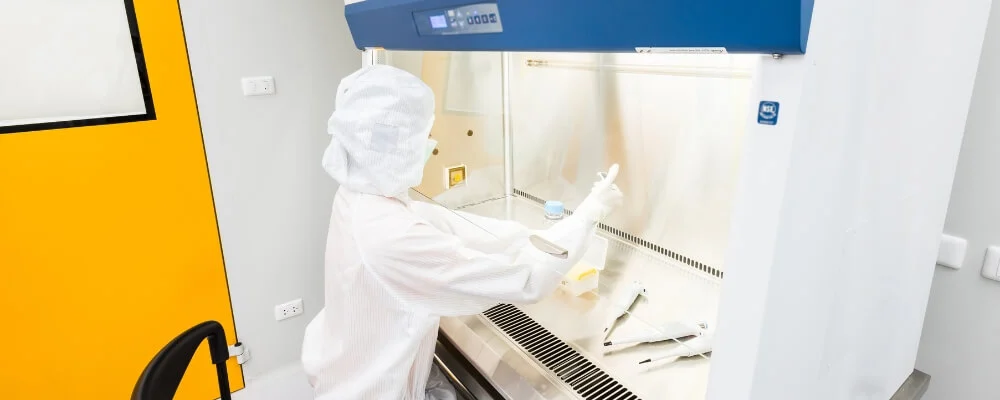
Different Types Of Biological Safety Cabinet (BSC)
Biological Safety Cabinets (BSCs) are essential equipment in laboratories handling biohazardous materials. They are categorized into three main classes—Class I, Class II, and Class III—each designed to provide varying levels of protection based on the nature of the biological agents being handled and the specific laboratory requirements. Additionally, Class II cabinets are further subdivided into Types A1, A2, B1, B2, and C1 to address more specialized containment needs.
1. Class I Biological Safety Cabinets
Class I BSCs provide basic protection for laboratory personnel and the environment but do not offer protection for the experimental materials. They achieve this through inward airflow, which prevents contaminated air from escaping the cabinet.
The air is drawn into the cabinet through the front opening, passes over the work surface, and is then exhausted through a High Efficiency Particulate Air (HEPA) filter before being released into the laboratory or the outside environment.
Due to their limited protection capabilities, Class I cabinets are primarily used for low-risk biological agents and have become largely obsolete in most research settings.
2. Class II Biological Safety Cabinets
Class II BSCs are the most commonly used type and provide comprehensive protection for personnel, the environment, and the experimental materials. They incorporate a vertical laminar airflow that creates a sterile work environment by continuously supplying HEPA-filtered air over the work surface. Class II cabinets are further categorized into several types based on their airflow and exhaust configurations:
- Type A1: These cabinets recirculate 70% of the air through the work area and exhaust the remaining 30% back into the laboratory or to the outside via a canopy. They are suitable for microbiological work with minimal use of volatile chemicals.
- Type A2: Similar to Type A1, Type A2 cabinets also recirculate 70% of the air but feature a negative pressure plenum around the exhaust ducts to enhance safety by preventing contaminated air from leaking into the laboratory. This makes them slightly safer than Type A1 cabinets.
- Type B1: These cabinets recirculate only 30% of the air while exhausting 70% directly to the outside environment through a dedicated duct. Type B1 cabinets are appropriate for handling small amounts of volatile chemicals and radionuclides.
- Type B2: Also known as total exhaust cabinets, Type B2 cabinets exhaust 100% of the air directly to the outside without any recirculation. They are ideal for work involving significant quantities of volatile or toxic chemicals, ensuring that no contaminated air is released back into the laboratory.
- Type C1: Introduced more recently, Type C1 cabinets combine features of both Type A2 and Type B2, offering flexible airflow management. They can be operated in modes that approximate either Type A2 or Type B2 configurations, providing enhanced versatility for varied laboratory needs.
3. Class III Biological Safety Cabinets
Class III BSCs offer the highest level of protection and are designed for work with the most hazardous biological agents, including those classified under Biosafety Level 4 (BSL-4). These cabinets are completely enclosed, gas-tight enclosures with glove ports for material manipulation, ensuring no direct exposure to the user or the environment.
All air entering and leaving the cabinet is HEPA-filtered, with exhaust air typically passing through two HEPA filters or a combination of HEPA filtration and incineration before being released externally.
Class III cabinets maintain a negative pressure relative to the surrounding environment, providing an additional fail-safe against containment breaches. They are essential for handling highly infectious and lethal agents, ensuring maximum containment and safety.
Each type of BSC is meticulously designed to cater to specific laboratory requirements, balancing the need for personnel protection, environmental safety, and product integrity. Proper selection and maintenance of the appropriate BSC type are crucial for ensuring safe and effective laboratory operations involving biohazardous materials.
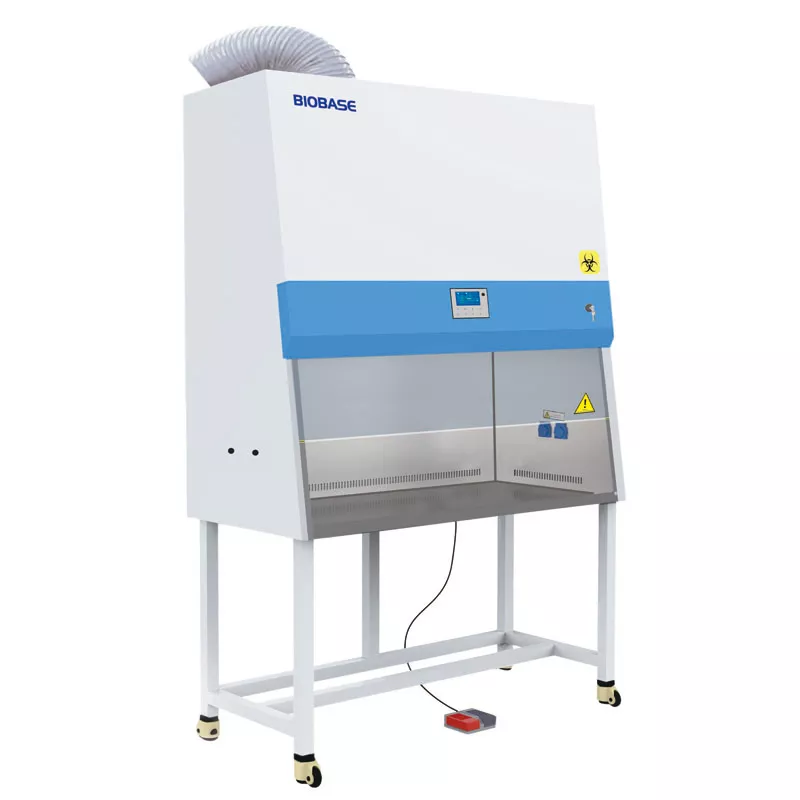
How Does Biological Safety Cabinet Work?
A Biological Safety Cabinet (BSC) operates by creating a controlled environment that ensures the containment of biohazardous materials, protection of laboratory personnel, and preservation of experimental samples. The fundamental mechanism involves the management of airflow through the cabinet using High Efficiency Particulate Air (HEPA) filters. Here’s a breakdown of how BSCs function across different classes:
1. Airflow Management
- Inward Airflow: BSCs draw air into the cabinet through the front grille at a specific velocity (typically 0.38 to 0.50 meters per second). This inward airflow creates a barrier that prevents contaminated air from escaping into the laboratory.
- Downward Laminar Flow: Inside the cabinet, HEPA-filtered air flows downward in a unidirectional (laminar) manner across the work surface. This continuous airflow maintains a sterile environment by sweeping away contaminants and protecting the experimental materials from external pollutants.
- Exhaust Air Filtration: After circulating within the cabinet, the air passes through HEPA filters before being exhausted either back into the laboratory (as in some Class II types) or directed externally through dedicated ductwork (common in Class II Type B and Class III cabinets). This filtration ensures that no biohazardous particles are released into the environment.
2. Containment and Protection
- Personnel Protection: The inward airflow protects users by preventing aerosols and pathogens from escaping the cabinet. Additionally, BSCs are designed to minimize turbulence, ensuring a stable airflow that reduces the risk of contaminant release during material manipulation.
- Environmental Protection: HEPA filters trap airborne contaminants, ensuring that exhausted air is free from biohazards. This prevents environmental contamination and maintains the overall safety of the laboratory space.
- Product Protection: The laminar downward airflow not only maintains a sterile workspace but also protects experimental samples from cross-contamination. This is crucial for ensuring the integrity and reliability of biological research.
3. Specialized Features by Class
- Class I BSCs: Provide basic protection by filtering exhausted air before releasing it into the laboratory. They protect personnel and the environment but do not safeguard the experimental material.
- Class II BSCs: Offer comprehensive protection by filtering both incoming and exhausted air. Depending on the subtype (A1, A2, B1, B2, C1), they can either recirculate a portion of the air or exhaust it entirely externally, making them suitable for a wide range of biological and chemical applications.
- Class III BSCs: Ensure maximum containment through a completely enclosed, gas-tight design with glove ports for material manipulation. They maintain negative pressure within the cabinet, providing an additional fail-safe against containment breaches. All air is HEPA-filtered and exhausted externally, making them ideal for handling the most hazardous biological agents (e.g., BSL-4).
4. Operational Controls
- Sash Management: The sash (or window) of the BSC acts as a physical barrier. Proper sash positioning maintains optimal airflow and containment. Alarms alert users if the sash is improperly positioned, ensuring continuous protection.
- Maintenance and Certification: Regular maintenance, including filter replacement and performance testing, ensures that the BSC operates effectively. Annual certification verifies the integrity of airflow patterns and filter performance, maintaining compliance with safety standards.
5. Safety Protocols
- Aseptic Techniques: Users must employ proper handling techniques, such as minimizing movements and using sterile tools, to maintain the integrity of the airflow and prevent contamination.
- Decontamination Procedures: Regular cleaning and disinfection of the cabinet surfaces prevent microbial growth and ensure a safe working environment.
In summary, a Biological Safety Cabinet functions through precise airflow control, effective filtration, and stringent containment measures tailored to different safety levels. By maintaining a sterile workspace and protecting both the user and the environment, BSCs are indispensable tools in biomedical research and clinical laboratories.
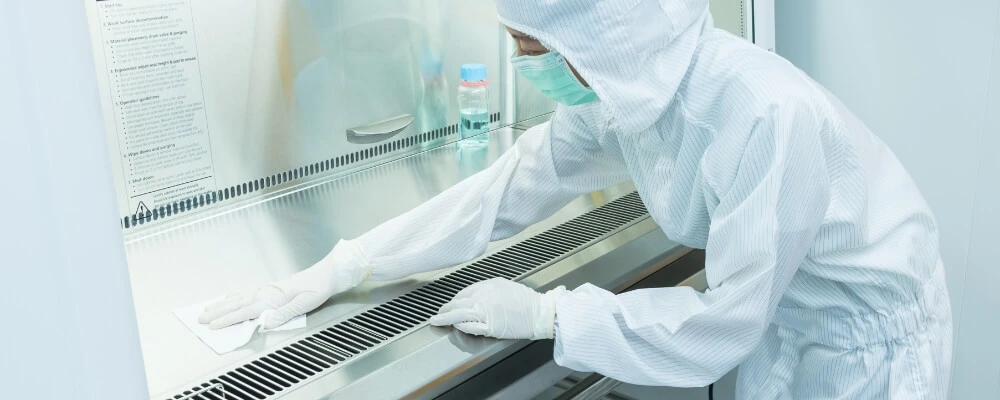
How To Use Biological Safety Cabinet (BSC) Properly?
Using a Biological Safety Cabinet (BSC) correctly is essential to ensure the safety of laboratory personnel, protect experimental materials, and maintain environmental containment. Below are the key steps and best practices for the proper use of a BSC:
1. Preparation Before Use
Training and Certification:
- Ensure you have received formal training on BSC operation and safety protocols.
- Verify that the BSC has been recently certified and is functioning correctly.
Personal Protective Equipment (PPE):
- Wear appropriate PPE, including lab coats, gloves, and safety glasses or face shields as required.
Material Setup:
- Gather all necessary materials and equipment before starting to minimize movement in and out of the cabinet.
- Surface decontaminate all items with 70% alcohol or an appropriate disinfectant before placing them inside the BSC.
Workspace Organization:
- Arrange materials from clean to contaminated areas to maintain a sterile environment.
- Place frequently used items near the front and less frequently used items toward the back to minimize disruptions to airflow.
2. Operating the BSC
Starting Up:
- Turn on the BSC at least 5 minutes before beginning work to allow the airflow to stabilize and purge any contaminants.
- Ensure all alarms and interlocks are functioning properly before use.
Maintaining Airflow Integrity:
- Keep the sash at the recommended height to maintain proper airflow and containment.
- Minimize movements that could disrupt the airflow, such as rapid arm movements or sweeping motions.
- Avoid placing bulky items near the front grille, which can obstruct airflow.
Working Inside the BSC:
- Use aseptic techniques to handle materials, moving from clean to dirty areas systematically.
- Avoid overcrowding the workspace to ensure adequate airflow around all items.
- Keep all containers closed or covered when not in active use to prevent aerosol generation.
- Use absorbent pads to catch spills and minimize aerosol formation.
Avoiding Contaminants:
- Do not bring unnecessary items into the BSC that could compromise sterility.
- Refrain from using open flames or gas burners inside the cabinet to prevent airflow disruption and potential hazards.
3. Shutting Down the BSC
Post-Work Procedures:
- Remove all experimental materials and equipment, ensuring that contaminated items are placed in appropriate biohazard bags.
- Surface decontaminate all interior surfaces of the BSC with an effective disinfectant, such as bleach or 70% alcohol, wiping down the work surface, walls, and any equipment.
Final Steps:
- Allow the BSC to purge for at least 5 minutes after completing work to remove any residual contaminants.
- Turn off the BSC if it is a recirculating type, following specific shutdown protocols for the cabinet class.
4. Maintenance and Cleaning
Regular Maintenance:
- Replace pre-filters and HEPA filters as recommended by the manufacturer, typically every 6-12 months or as needed based on usage and contamination levels.
- Schedule annual certification and performance testing by qualified professionals to ensure the BSC meets safety standards.
Routine Cleaning:
- Clean and disinfect the BSC after each use to prevent microbial growth and maintain a sterile environment.
- Remove and decontaminate biohazard waste following institutional protocols, using autoclaving or other approved methods.
5. Safety Protocols
Emergency Procedures:
- Familiarize yourself with the BSC’s alarm systems and know how to respond to airflow disruptions or sash alarms.
- In case of a spill or contamination inside the BSC, follow established spill cleanup procedures while keeping the cabinet running to contain aerosols.
Proper Handling of Materials:
- Handle all biohazardous materials with care, using appropriate tools to avoid direct contact and aerosol generation.
- Ensure that all waste is disposed of according to biosafety guidelines to prevent environmental contamination.
Avoiding Disruptions:
- Keep the laboratory environment stable by minimizing door openings, controlling airflow sources like windows and vents, and avoiding high-traffic areas near the BSC.
6. Documentation and Compliance
Record-Keeping:
- Label the BSC with the class and type, date of last certification, and the name of the technician who performed maintenance.
- Maintain logs of usage, maintenance, and any incidents to ensure compliance with regulatory standards.
Adherence to Guidelines:
- Follow institutional biosafety protocols and national guidelines (e.g., NSF/ANSI 49, CDC BMBL) to ensure safe and compliant use of the BSC.
By meticulously following these steps and maintaining good laboratory practices, you can ensure the effective and safe operation of Biological Safety Cabinets, thereby protecting yourself, your colleagues, and the integrity of your research.
Conclusion
In conclusion, Biological Safety Cabinets (BSCs) are indispensable tools in modern laboratories, providing critical protection for personnel, research materials, and the environment from biohazardous threats.
By utilizing advanced airflow management and HEPA filtration, BSCs ensure a sterile and secure workspace, preventing contamination and exposure to infectious agents. With various classes and types tailored to different biosafety levels and specific laboratory needs, BSCs offer versatile and reliable containment solutions that uphold the highest safety standards. Proper selection, operation, and maintenance of BSCs not only comply with regulatory guidelines but also enhance the integrity and reliability of scientific research.
As the landscape of biomedical and microbiological research continues to advance, the role of Biological Safety Cabinets remains fundamental in fostering safe and effective scientific endeavors.

